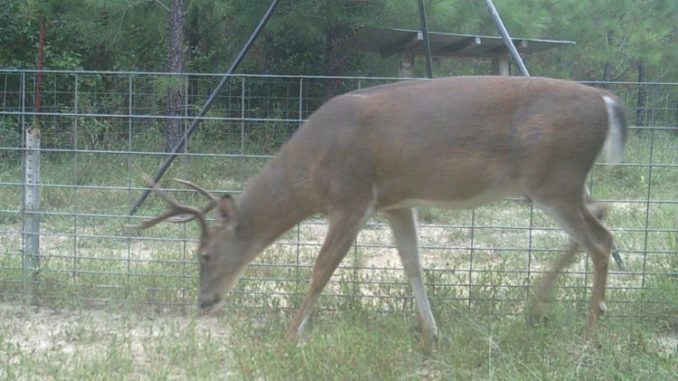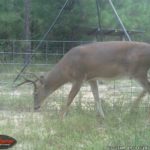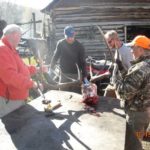
A look at Louisiana’s cervid carcass importation ban
As I mentioned in our last installment, the Louisiana Department of Wildlife and Fisheries is focusing on the spread of chronic wasting disease in wild deer.
At a public meeting held last July, LDWF Wildlife Division professionals reported that CWD has spread to Texas and Arkansas, bringing the total to 24 states with positive tests results.
So the Department and the Louisiana Wildlife and Fisheries Commission are in the process of establishing regulations to prevent this insidious disease from entering the state.
Thirty-seven states already have restrictions in place.
CWD is a transmissible spongiform encephalopathy. The infective agent in this disease is a mutated protein known as a prion. In simple terms, CWD kills by attacking the brain of its victim, slowly eating away brain tissue. The animal experiences a loss of appetite, and begins losing weight and becoming disoriented, eventually dying. Thus the descriptive common name “wasting disease.”
And the prions can lay dormant in the soil indefinitely until picked up by another foraging animal.
The really bad news is there seems to be no way to eliminate the disease once it is present in the soil.
It is found in both domestic and wild deer herds. CWD affects all cervids, including deer, elk and moose. It might be present for up to two years in a host animal before symptoms are noticed.
Live importation of deer into the state has been prohibited by LDWF since 1998, and the state Department of Agriculture and Forestry stopped cervid importation into their licensed facilities in 2012.
But wild deer harvested by hunters in states where CWD is known to be present are another source of concern.
CWD became established in one area of New York after a taxidermist disposed of infected tissue from a trophy head brought from out of state.
The new regulation under consideration by the LWFC will prohibit, in general, possession and transport into Louisiana of any deer or other cervid taken outside the state unless the carcass has been processed (at least skinned and quartered, without the head and spinal column attached).
The head and cape may not be possessed or transported unless the skull has been cleaned, and all tissue removed and the cape is free of any meat, fat or other tissue.
Remember that this is only a general description of the proposed regulation and the final version might differ in specifics.
I have had conversations with department personnel, including wildlife enforcement agents about the challenges and questions associated with enforcing such a regulation.
The LWFC has delayed implementation until March 1, but it is coming — so hunters travelling out of Louisiana need to start making preparations for bringing meat and trophy heads home in compliance with CWD regulations.
For many hunters it won’t be a problem. My own situation is a case in point.
I’ll go out to the Rockies for elk in the fall. If fortune smiles, the elk will go to a wild game processor for cutting, wrapping and freezing, putting me in compliance with carcass transport regulations.
With help from the outfitter, the head will be caped. The brain and all other tissue will be removed from the skull, and it will be boiled clean before I head for home.
In a do-it-yourself situation, I will still go to a processor with the meat and simply saw off the antlers and scrape the skull plate clean.
In either case, should I choose to bring home the cape, it will be scraped and salted.
Without time restraints, it is not a problem to process and prepare a trophy for legal entry into the state. The problem comes when a trophy is taken on the last afternoon of the last day of a hunt and the hunter has no time to hang around while things are processed.
In those situations, consider having the meat processed and shipped, and think about having taxidermy services performed where the trophy was taken.
Most biologists and wildlife agents believe CWD transport regulations will be more of a problem for Louisiana hunters routinely hunting adjoining states for deer.
Many Louisiana hunters do all their deer hunting in Mississippi, and bring those deer home for skinning and processing. It will be a not-very-convenient adjustment for many hunters to make.
Louisiana taxidermists also have questions regarding their level of responsibility under any new CWD transport regulations. They want to know what to do when a hunter shows up at the studio with the unprocessed head and cape of a deer taken outside the state.
Without a doubt and regardless of the specifics of CWD regulations, Louisiana hunters will have to adjust and deal with some level of inconvenience.
My hope is that we all will support the effort to keep CWD from infecting Louisiana whitetails. Doing anything less will change the way we hunt forever — and it won’t be a change for the better.




